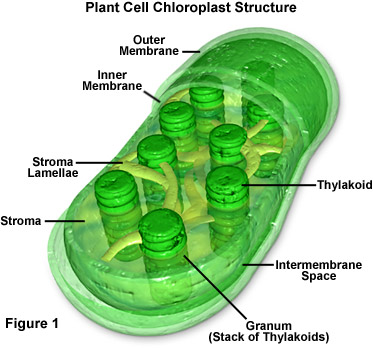 The Earth's resilience & a threat of human extinction.
The Earth's resilience & a threat of human extinction. "The Earth, our living Earth, is quite anomalous; its atmosphere has the reducing
gases and the oxidizing gases all coexisting––and this is a most unstable
situation."
"The Earth, our living Earth, is quite anomalous; its atmosphere has the reducing
gases and the oxidizing gases all coexisting––and this is a most unstable
situation."
"Like the Norns in Wagner's Der Ring des Nibelungen, we are at the end of our tether, and the rope, whose weaves define our fate, is about to break."
James Lovelock, The Revenge of Gaia.
by
James Lovelock
The existence of so little carbon dioxide gas and the abundant nitrogen (79%) and oxygen (21%) gases comprising the Earth's atmosphere is quite unlike our closest planetary relatives, Venus and Mars.
Lovelock argues that the Earth's atmosphere exists in a state that is far from a chemical equilibrium.
In addition the Earth's surface has managed to grow cooler in an exact pace with the Sun's tendency to heat up as it ages!
A very peculiar anomaly is "a trace of methane," that amounts to 1.5 parts / million because it is a very reactive gas with oxygen."
The idea of the "Balance of Nature," may be a serious obstacle to fully understanding how "nature" actually functions.
The Earth then is not in any equilibrium or balanced state, but absorbs sufficient energy of an optimal frequency and mass to promote rather than inhibit organisms because it is at once, tectonically active, magnetically shielded, atmospherically blanketed and thermally regulated by its oceans of liquid water.
 "There must be some
process at the Earth's surface which can assemble the sequence of unstable and
reactive intermediates in a programmed manner to achieve this end."
"There must be some
process at the Earth's surface which can assemble the sequence of unstable and
reactive intermediates in a programmed manner to achieve this end."
"Most probably this process is Life.
"When the air, the
ocean, and the crust of our planet are examined . . . the Earth is seen to be.
. . . almost beyond a doubt . . . a biological construction."
"Methane . . . is in fact part of a feedback loop concerned with the regulation
of oxygen."
The roles of microbiota in stabilizing Earth systems.
Lynn Margulis on Microcosmos
"The earliest photosynthetic bacteria were anaerobic since "none of the earliest forms of photosynthesis generated oxygen."
The cyanobacteria (once
known as blue-green algae) -- which may have first appeared on earth 3.5 billion
years ago -- were able to live aerobically off of the oxygen that they produced
as a waste product in the process of photosynthesis. After a billion years a
great diversification took place among the cyanobacters; the impact was catastrophic
for their allied members of the biotic community --
obligate anaerobes which retreated into the mud for safety.
"Never before or since have organisms on Earth so profoundly affected the atmosphere."
"The rise of aerobic photosynthesis was a global catastrophe. Because oxygen
was toxic to early life, it became an increasingly serious pollutant."

"The resolution of the oxygen crisis was a turning point in the history
of the cell: microbes evolved the capacity to use in respiration the oxygen
that they produced."
Large multicellular life is, according to Dr. Lynn Margulis, a relatively recent inhabitant of the Earth. Only in the last one-seventh of life' historic inhabitation of the Earth have large multicellular creatures evolved -- and most of those have become extinct. Besides arguing that microbes have a functional priority, she insists that bacterial ancestors of today's Monera and Protoctista produced the conditions on the Earth that have allowed the larger creatures to flourish & survive.
That is because all larger beings are actually symbiotic communities of eukaryotic & prokaryotic creatures that formed successful partnerships!
"The living world is unambiguously divisible into EUKARYOTES & PROKARYOTES, cells that lack nuclei."
"Without the prokaryotes continuing activities, neither we nor the animals and plants on which we directly depend would continue to exist."
"The eukaryote cell is built up from other {prokaryote} cells; it is a community of interacting microbes. Partnerships between cells once foreign and even enemies to each other are at the very roots of our being."
"Prokaryote, prokaryotic" [Greek] {PRO} = before + {Karyot} = nucleus; literally having evolved before nucleated creatures, possessing no well defined central capsule or nucleus where genetic material is stored. Not having a nucleus, nor a diverse array of organelles.
Instead of protecting nucleic acids in tightly coiled chromosomal strands, the DNA or RNA float freely, if precariously, within the cytoplasm of the cell. Other parts of the cell, such as chloroplasts in plants are missing, instead chlorophyll floats freely in the cytoplasm and sunlight is converted into starch in these chlorophyll bodies.
Prokaryotes are typically anaerobic bacteria that may or may not enter into
symbiotic living arrangements with other creatures, they are considerably smaller
than Eukaryotic cells, are more susceptible to mutation, and some among their
members posses the singular ability to fix nitrogen
& sulfur that all of the eukaryotes lack.
"Eukaryote; eukaryotic
[Greek] {EU} = well + {KARYOT} nucleated: having a well formed nucleus or a
distinct nucleus as the case within which the nucleic
acids RNA and DNA are protected and coiled tightly around several chromosomes.
Chromosomes are [literally: color bodies due to their dark stain when viewed
under the microscope] the carriers of genes in the form
of double helices of DNA {deoxyribonucleic acid}.
In addition to chromosomes in a well defined nucleus,
eukaryotes are distinguished from prokaryotes because they are quite a bit larger
and contain many, but not necessarily all, of the following organelles:
mitochondria [power supply], chloroplasts, microtubules, centrioles, vacuoles {for fluid & salt regulation}, lysosomes {digest food}, golgi bodies, flagella, and thicker cell membranes or walls in plants."
James Lovelock's recent warnings.
"Unfortunately for us, these wholly different approaches [laissez faire as opposed to sustainable development], one the expression of international decency, the other of unfeeling market forces, have the same outcome: the probability of disastrous global change. The error they share is the belief that further development is possible and that the Earth will continue, more or less as now, for at least the first half of this century."
". . . but now is much too late; the damage has already been done."
". . . both measures deny the existence of the Earth's disease, the fever brought on by a plague of people. . . . which regard the Earth as there to be exploited for the good of humankind."
Where do these choices get us in the end?
"one where few of us survive among the wreckage of our once biodiverse Earth."
"We are programmed by our inheritance to see other living things as mainly something to eat, . . . ."
James Lovelock, The Revenge of Gaia. pp. 3-4.
